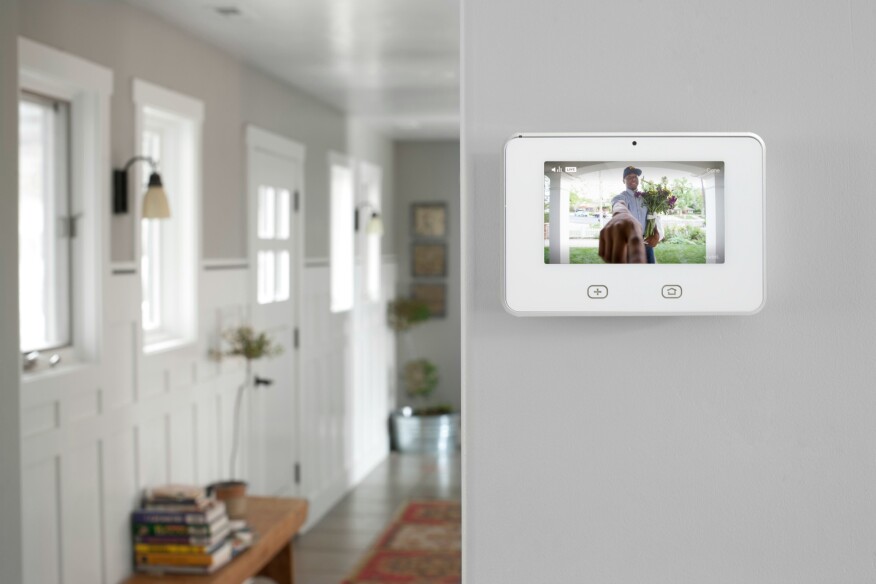
The smart home industry has revolutionized the way we live and interact with our homes. Companies like Nest and Amazon have saved home owners money on their utility bills with energy monitoring devices and made daily life more convenient with home assistants like the Amazon Echo’s Alexa. Big builders like Lennar and Taylor Morrison have embraced smart home technology in their newest communities.
Here, BUILDER talks with Trevor Lambert, senior director of brand management at Vivint Smart Home, about the growing popularity of smart home technology. The Provo, Utah-based company is a front runner in the smart home industry. The company, which has its own line of smart home products in addition to partnerships with other manufacturers, builds, customizes, and installs smart home systems for consumers.
“When we talk about the smart home, it’s really those connected devices within the home that work together through an integrated system, whether it’s with security, automated locks, energy control, carbon monoxide monitoring, smoke and fire alarms, or other devices,” says Lambert.
From the most popular products that consumers are requesting to their biggest fears about automating their home, Lambert offers insight into the mind of a consumer in this BUILDER interview:
What benefits will homeowners gain from living in a smart home?
There are really three things we look at when we are curating and building a smart home system for consumers. At the end of the day, if we can give more time, money, or control back to the consumer, then we feel like it’s a win. We think about time from the perspective of convenience. How many times have you left your home and forgot to lock your door, or left the garage door open? With a Vivint smart home—or smart home system in general—you can easily take care of that with an app on your phone. Energy efficiency and savings is another big factor. Consumers are able to actually conserve energy, and save money in the process, through systems that can monitor energy usage, conserve it, and use it really efficiently. The last thing is being able to be in control of your home—whether it’s someone knocking on your door that you want to see through your doorbell camera or a relative that you want to let into your home, smart home products allow you to have a little more control.

What are the best products or systems for an “entry-level” smart home for the average consumer?

One is a smart thermostat. When homeowners want to venture into the category, the first thing they think of is “how can I save money?” The second thing that we’ve found really appealing to consumers is a doorbell camera, and the reason for that is both for security and convenience. It doubles as an outdoor camera but it also works as a way for you to understand who’s at your door. If a delivery person comes to your door, you can talk directly to that person and unlock the door from your phone so they can put the package inside.
Would buyers rather purchase a new home that is already equipped a smart home system or install customized systems themselves?
I think it goes both ways. Not every consumer is the same and I think there’s definitely a segment of the population that likes to have thing already baked after moving in, so there is a convenience factor for something that’s existing. But for another segment of the population there are a variety of options, especially if they just want to have what we call a single point solution, meaning they just want to buy a doorbell camera for example. They can do that and then customize their system themselves as they go, and there are other companies like Vivint specifically where we can bring the whole thing to a homeowner and customize and tailor it to their specific needs.
What are consumer's most common concerns and reservations about smart homes?
I think smart homes are a new category for consumers, so there can be a lack of understanding around how the systems work. There is an overwhelming amount of variety and choice that exists, not just from a products perspective but for technology as a whole. There are a lot of platforms and they all can connect and communicate with each other, so I think the choices can be overwhelming for consumers. Because of the newness of the category consumers ask if smart homes are secure and safe. We kind of compare this to when people first started mobile banking, saying “accessing my accounts from my phone, is that really safe?” At the end of the day consumers will gain confidence and trust in smart home products, and that’s what we expect to happen here in the smart home category.
In the end, Lambert says what’s most important is that builders understand what’s important to the client, and are able to prioritize their home needs to find the right products that meet them, be it security or energy conservation for example. Integrate products into the home that won’t become obsolete quickly, and convey to consumers an understanding of the technical and operational support that’s available on the back end of smart products once it’s been purchased and installed.
This interview has been lightly edited for clarity.









